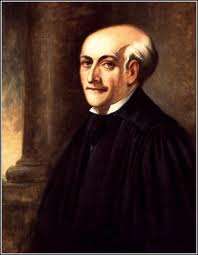Henry Brockholst Livingston
- For the U.S. Representative, see Henry W. Livingston
| Henry Livingston | |
|---|---|
 | |
| Associate Justice of the Supreme Court of the United States | |
|
In office January 16, 1807 – March 18, 1823 | |
| Nominated by | Thomas Jefferson |
| Preceded by | William Paterson |
| Succeeded by | Smith Thompson |
| Personal details | |
| Born |
November 25, 1757 New York City, New York, U.S. |
| Died |
March 18, 1823 (aged 65) Washington, D.C., U.S. |
| Political party | Democratic-Republican |
| Alma mater | Princeton University |
| Religion | Presbyterianism |
Henry Brockholst Livingston (November 25, 1757 – March 18, 1823) was an American Revolutionary War officer, a justice of the New York Court of Appeals and eventually an Associate Justice of the Supreme Court of the United States.
Early life
Born in New York, New York to Susanna French and William Livingston,[1] he received a B.A. from the College of New Jersey, (now Princeton University), in 1774.
Career
He inherited the Livingston estate, Liberty Hall (at modern-day Kean University), and retained it until 1798. During the American Revolutionary War he was a lieutenant colonel of the New York Line, serving on the staff of General Philip Schuyler from 1775 to 1777 and as an Aide-de-Camp to Major General Benedict Arnold at the Battle of Saratoga. He was a Private secretary to John Jay, then U.S. Minister to Spain from 1779 to 1782. Livingston was briefly imprisoned by the British in New York in 1782. After the war, Livingston read law to enter the Bar in 1783, and was in private practice in New York City from 1783 to 1802.
Livingston served as a justice on the Supreme Court of New York from 1802 to 1807, where he authored a famous dissent in the case of Pierson v. Post, 3 Cai. R. 175 (1805). Two years later, on November 10, 1806, Livingston received a recess appointment from Thomas Jefferson to a seat on the Supreme Court of the United States vacated by William Paterson. Formally nominated on December 15, 1806, Livingston was confirmed by the United States Senate on December 17, 1806, and received his commission on January 16, 1807. He served on the Supreme Court from then until his death in 1823. During his Supreme Court tenure, Livingston's votes and opinions often followed the lead of Chief Justice John Marshall. In that era, Supreme Court Justices were required to ride a circuit; in Justice Livingston's case, he presided over cases in New York State.
Livingston was elected a member of the American Antiquarian Society in 1814.[2]
Virginia-New York Alliance
In addition to being Jefferson's second appointment to the supreme court, Livingston served as a judge for the State Supreme Court of New York, a member of the New York State Assembly, and an immensely prominent political activist. Due to family ties, Livingston's allegiance to the Democratic-Republican party soon faded. Essentially, Livingston rebelled and goaded the Federalists to an enormous extent. With members consisting of Aaron Burr, Robert R. Livingston, and Edward Livingston (both cousins of Brockholst), Livingston became one of the few emerging from a compact political faction in New York to form an alliance with Jefferson's supporters in Virginia. This became known as the Virginia-New York alliance, which proved to be vital in Jefferson's 1800-1801 election.[3]
Personal life
He married three times, his wives were Catherine Keteltas (1761-c1801), Ann N. Ludlow (1775-1807), and Catherine Seaman (1775-1859), widow of John Kortright.[4]
Livingston died in Washington, D.C. His remains are interred at Green-Wood Cemetery in Brooklyn, N.Y.[5]
See also
| Wikisource has original works written by or about: Henry Brockholst Livingston |
- Demographics of the Supreme Court of the United States
- List of Justices of the Supreme Court of the United States
- List of U.S. Supreme Court Justices by time in office
- United States Supreme Court cases during the Marshall Court
References
- ↑ William Nelson (1876). Biographical Sketch of William Colfax, Captain of Washington's Body Guard.
- ↑ American Antiquarian Society Members Directory
- ↑ ABRAHAM, HENRY J. "President Jefferson's Three Appointments To The Supreme Court Of The United States: 1804, 1807, And 1807." Journal Of Supreme Court History 31.2 (2006): 141-154. America: History & Life. Web. 15 July 2016
- ↑ The letters of Moore Furman, deputy quarter-master general of New Jersey in the revolution,. New York: Pub. for the Society by F. H. Hitchcock. 1912. p. 9. Retrieved 3 October 2015.
- ↑ Henry Brockholst Livingston at Find a Grave.
- Henry Brockholst Livingston at the Biographical Directory of Federal Judges, a public domain publication of the Federal Judicial Center.
Further reading
- Abraham, Henry J. (1992). Justices and Presidents: A Political History of Appointments to the Supreme Court (3rd ed.). New York: Oxford University Press. ISBN 0-19-506557-3.
- Bibliography on William Patterson at Supreme Court Historical Society.
- Cushman, Clare (2001). The Supreme Court Justices: Illustrated Biographies, 1789–1995 (2nd ed.). (Supreme Court Historical Society, Congressional Quarterly Books). ISBN 1-56802-126-7.
- Frank, John P. (1995). Friedman, Leon; Israel, Fred L., eds. The Justices of the United States Supreme Court: Their Lives and Major Opinions. Chelsea House Publishers. ISBN 0-7910-1377-4.
- Hall, Kermit L., ed. (1992). The Oxford Companion to the Supreme Court of the United States. New York: Oxford University Press. ISBN 0-19-505835-6.
- Martin, Fenton S.; Goehlert, Robert U. (1990). The U.S. Supreme Court: A Bibliography. Washington, D.C.: Congressional Quarterly Books. ISBN 0-87187-554-3.
- Urofsky, Melvin I. (1994). The Supreme Court Justices: A Biographical Dictionary. New York: Garland Publishing. p. 590. ISBN 0-8153-1176-1.
- Warren, Charles. (1928) The Supreme Court in United States History, 2 vols. at Google books.
| Legal offices | ||
|---|---|---|
| Preceded by William Paterson |
Associate Justice of the Supreme Court of the United States 1806–1823 |
Succeeded by Smith Thompson |
| | |||||||||||||
|---|---|---|---|---|---|---|---|---|---|---|---|---|---|
|
 | ||||||||||||
